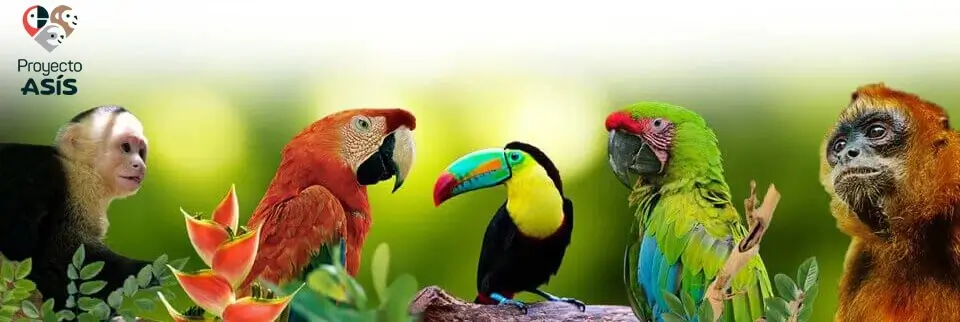Meet the white-faced capuchin monkey (Cebus imitator) – one of the most intelligent and charismatic primates in Central America. With their expressive white faces and remarkable problem-solving skills, these monkeys have captivated scientists and nature lovers alike. But did you know these clever creatures are facing serious threats in the wild?
Keep reading to discover why these monkeys are so special and what we can do to ensure their survival!
Meet the White-Faced Capuchin (Cebus imitator)
Other Common Names & Taxonomy
- Scientific Name: Cebus imitator (formerly Cebus capucinus)
- Other Names:
- Central American white-faced capuchin
- White-headed capuchin
- Mono carablanca (Spanish)
- Taxonomic Classification:
- Kingdom: Animalia
- Phylum: Chordata
- Class: Mammalia
- Order: Primates
- Family: Cebidae
- Genus: Cebus
Fun Fact: Genetic studies in 2012 revealed these are a distinct species from South American capuchins!
Anatomy: Built for Intelligence & Survival
These medium-sized monkeys have evolved incredible adaptations:
- Size & Build:
- Body length: 13-18 inches (33-45 cm)
- Tail length: 14-22 inches (35-55 cm) – fully prehensile!
- Weight: 4.4-8.8 lbs (2-4 kg)
- Distinctive Features:
- Black body with striking white face, chest and shoulders
- Pinkish face in adults
- Exceptionally dexterous hands with opposable thumbs
- Brain Power:
- Brain-to-body ratio similar to chimpanzees!
- Capable of using tools (one of few primates that do this regularly)
- Can solve complex problems and learn new skills quickly
Conservation Status: A Species in Trouble
While currently listed as Least Concern by IUCN, populations are declining due to:
- Major Threats:
- Habitat destruction (deforestation for agriculture)
- Illegal pet trade (high demand due to their intelligence)
- Hunting for bushmeat
- Climate change altering food availability
- Protected Areas:
Found in national parks like Corcovado (Costa Rica) and Darién (Panama), but protection outside these areas is limited.
Biology & Behavior: Nature’s Problem Solvers
Diet & Foraging
These omnivores have a varied diet:
- 50-70% fruits and nuts
- Insects, spiders, and small vertebrates
- Bird eggs and occasionally small mammals
- Unique behavior: They rub citrus fruits on their fur as natural insect repellent!
Social Structure
- Live in groups of 10-35 individuals
- Complex hierarchy with alpha male dominance
- Females typically stay in their birth group while males disperse
Remarkable Intelligence
- Only New World monkey known to:
- Use tools regularly (stones to crack nuts)
- Understand cause-and-effect relationships
- Recognize themselves in mirrors
- Have been observed:
- Using leaves as “cups” to drink water
- Employing defensive strategies against predators
Population Trends: A Mixed Picture
- Global Population: Unknown but decreasing
- Strongholds: Costa Rica and Panama’s protected areas
- Declining Regions:
- Nicaragua (due to deforestation)
- Coastal areas (from habitat fragmentation)
Geographic Range: Where They Call Home
- Native Range: Honduras through Panama
- Preferred Habitats:
- Tropical rainforests
- Dry deciduous forests
- Mangrove ecosystems (some populations)
Reproductive Cycle: Slow but Steady
- Mating: Year-round with peaks in dry season
- Gestation: 5-6 months
- Birth: Typically single infants (twins rare)
- Maternal Care:
- Infants cling to mother for 3-4 months
- Weaned at 12+ months
- Stay with family group for 4+ years to learn social skills
- Maturity: Females at 4 years, males at 7-8 years
- Lifespan: 15-25 years in wild, up to 45 in captivity
How You Can Help Protect These Amazing Primates
- Support Conservation Organizations:
- The Capuchin Foundation
- Rainforest Trust
- Local wildlife rescue centers
- Make Sustainable Choices:
- Choose shade-grown coffee
- Avoid products with unsustainable palm oil
- Support ecotourism in Central America
- Spread Awareness:
- Share this article
- Educate others about the pet trade dangers
- Support wildlife documentaries
White-faced capuchins aren’t just fascinating animals – they’re essential ecosystem engineers. Their seed dispersal maintains healthy forests, and their intelligence gives us unique insights into primate evolution. While still relatively common, the threats they face are very real.
What You Can Do Today:
- Share this post to raise awareness
- Consider donating to capuchin conservation
- Make wildlife-friendly consumer choices
Every action helps ensure these remarkable monkeys continue thriving in Central America’s forests for generations to come!
Did you learn something new? Share this post to spread awareness! 🐵🌎


































You must be logged in to post a comment.